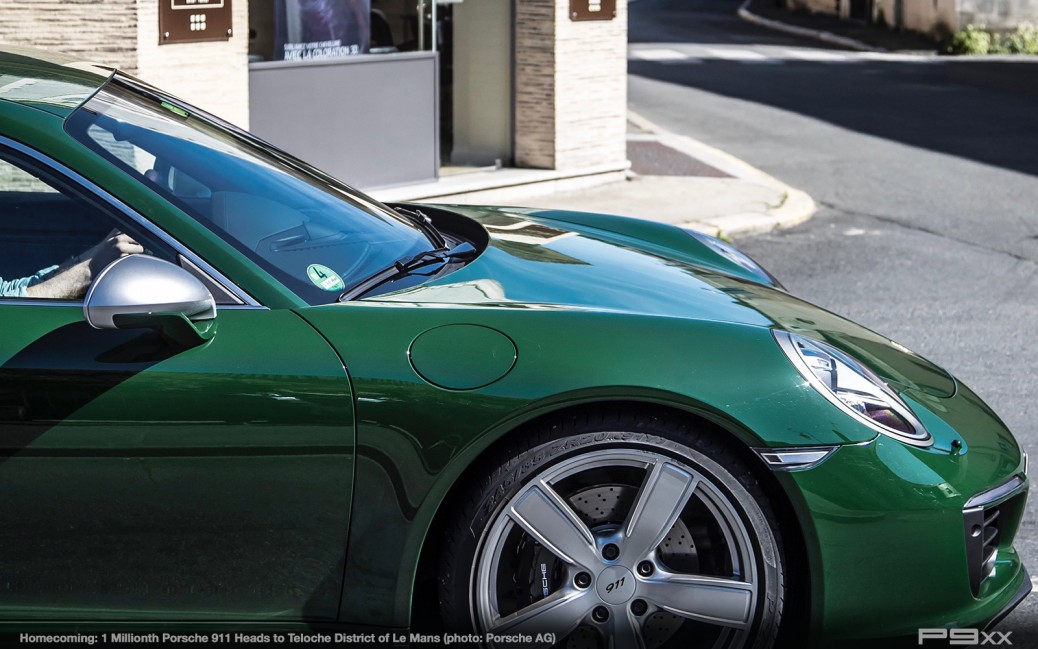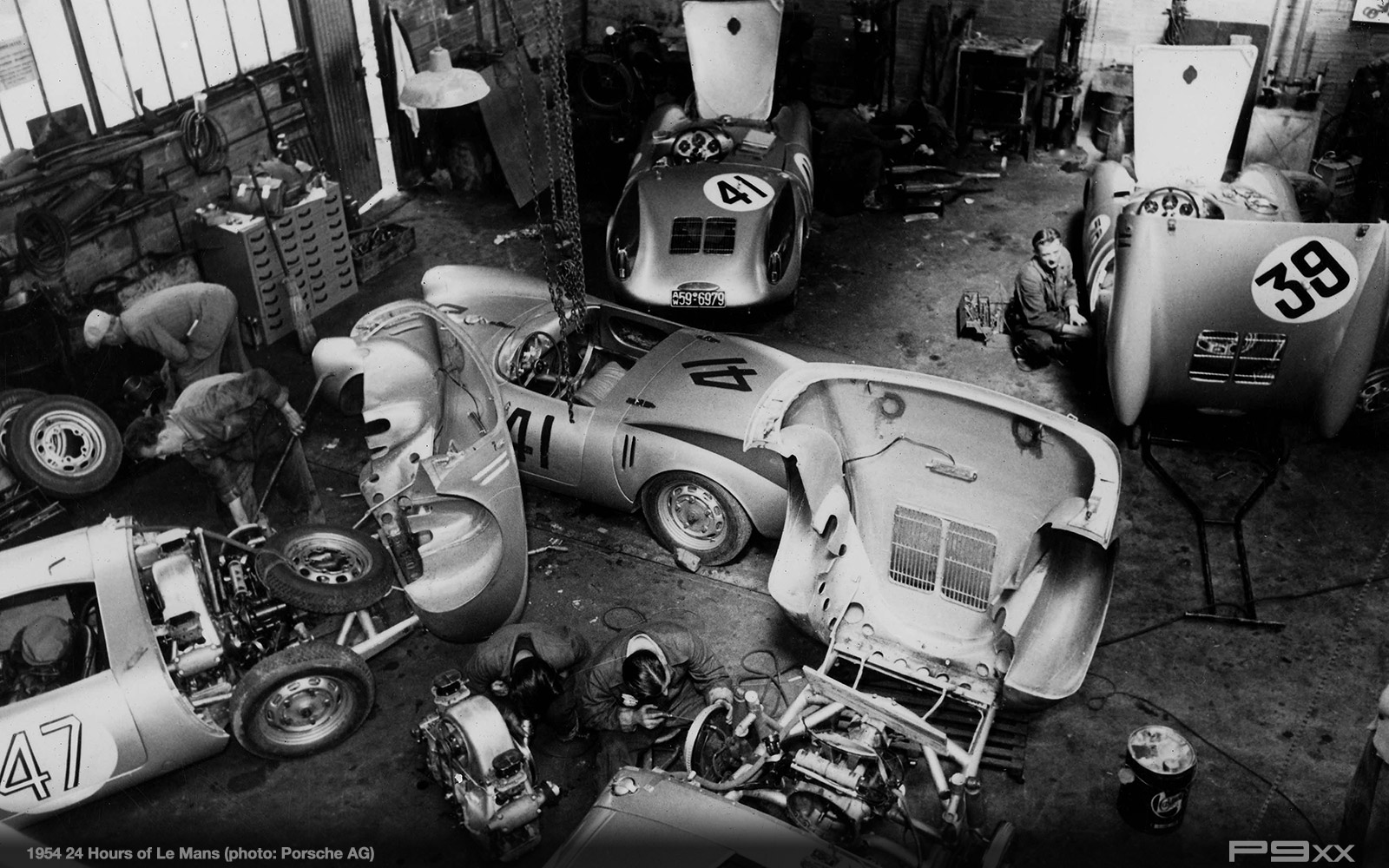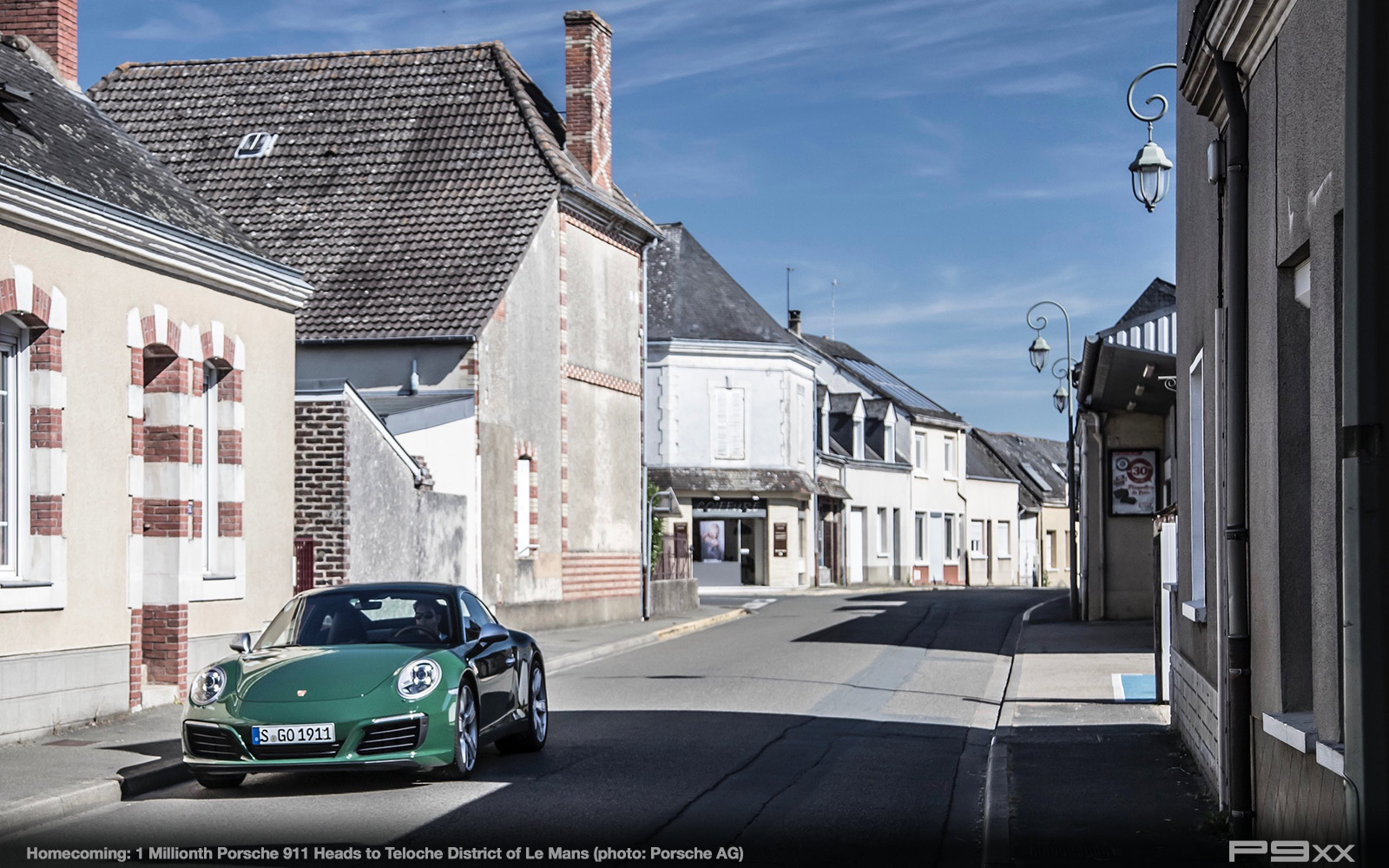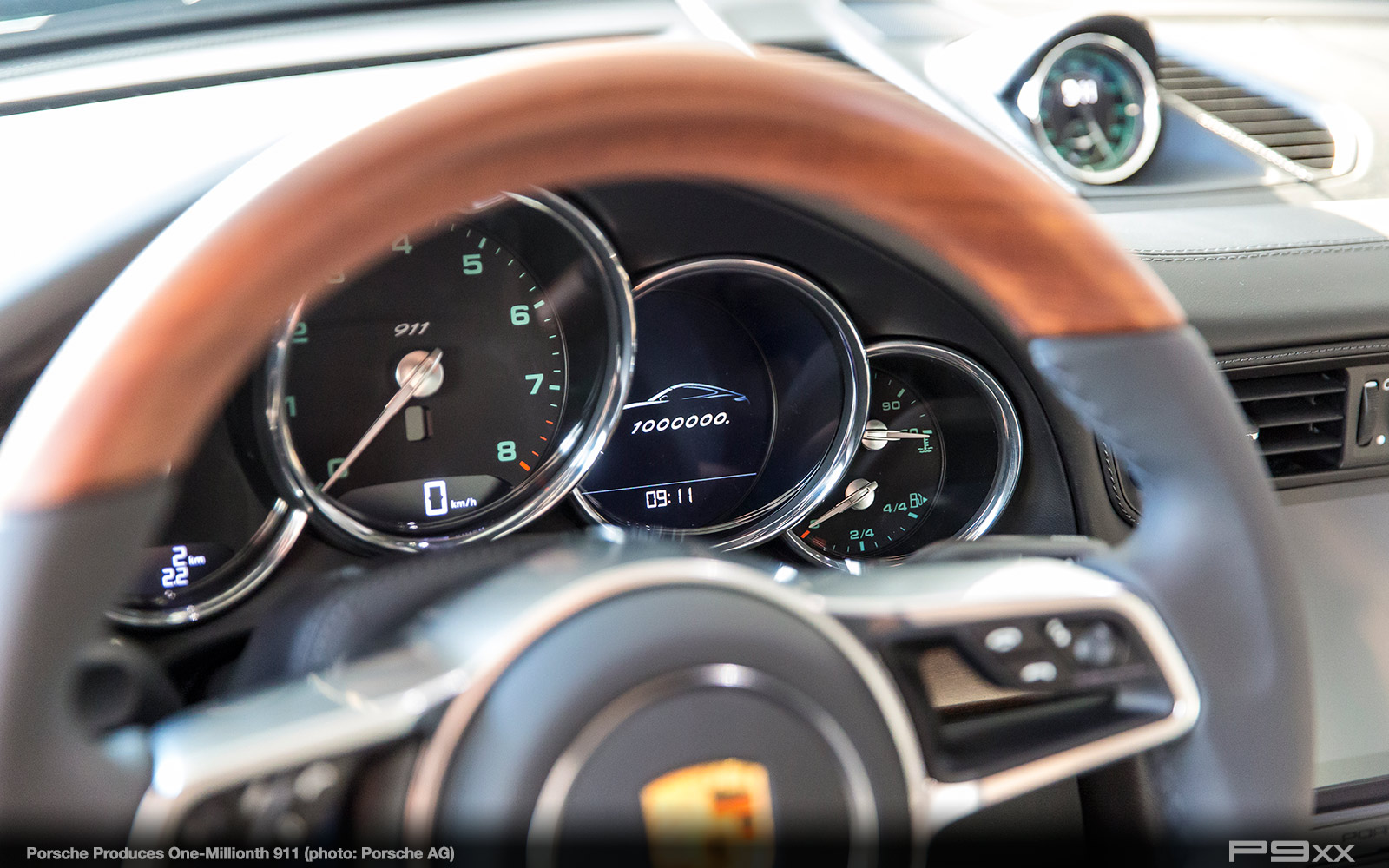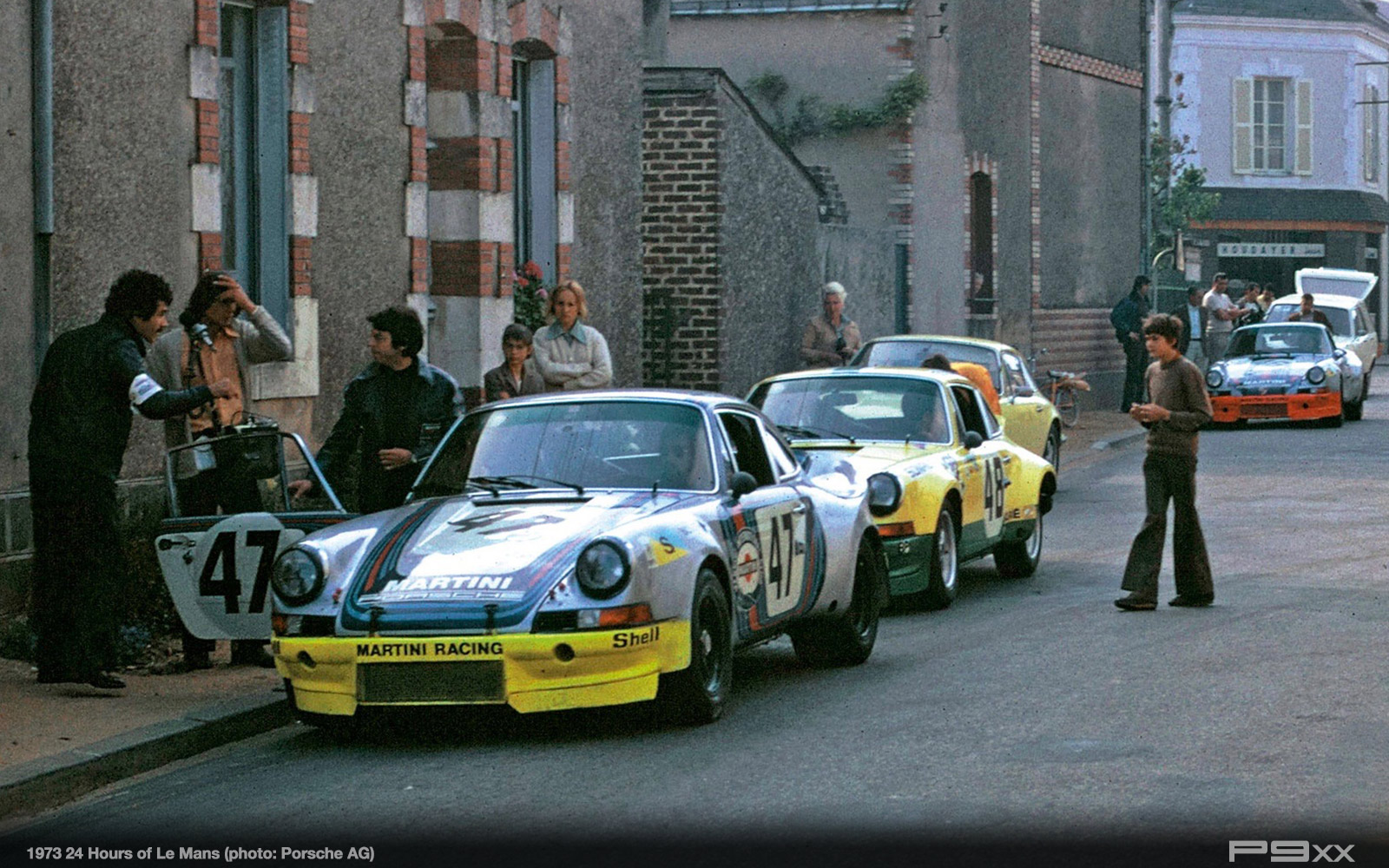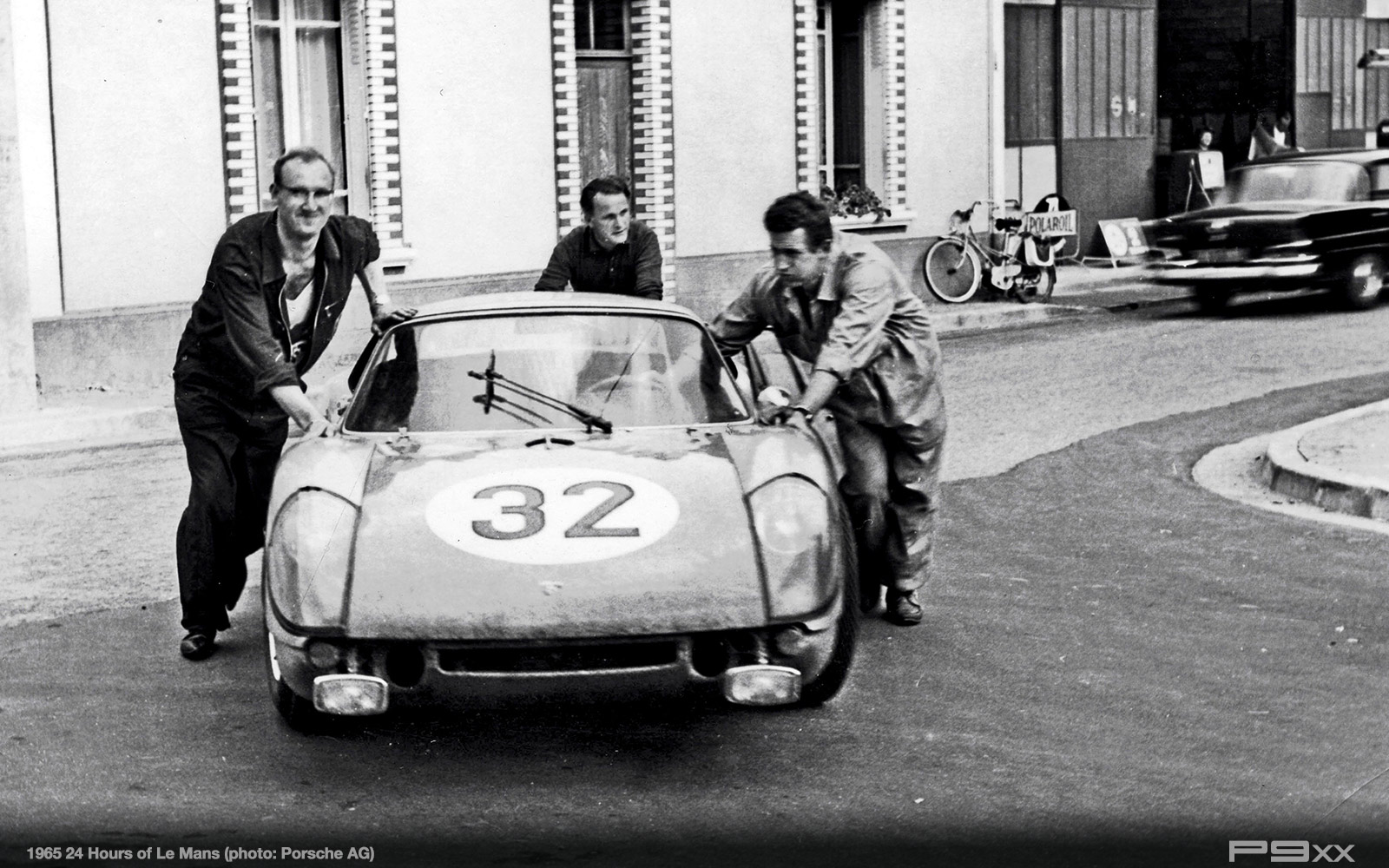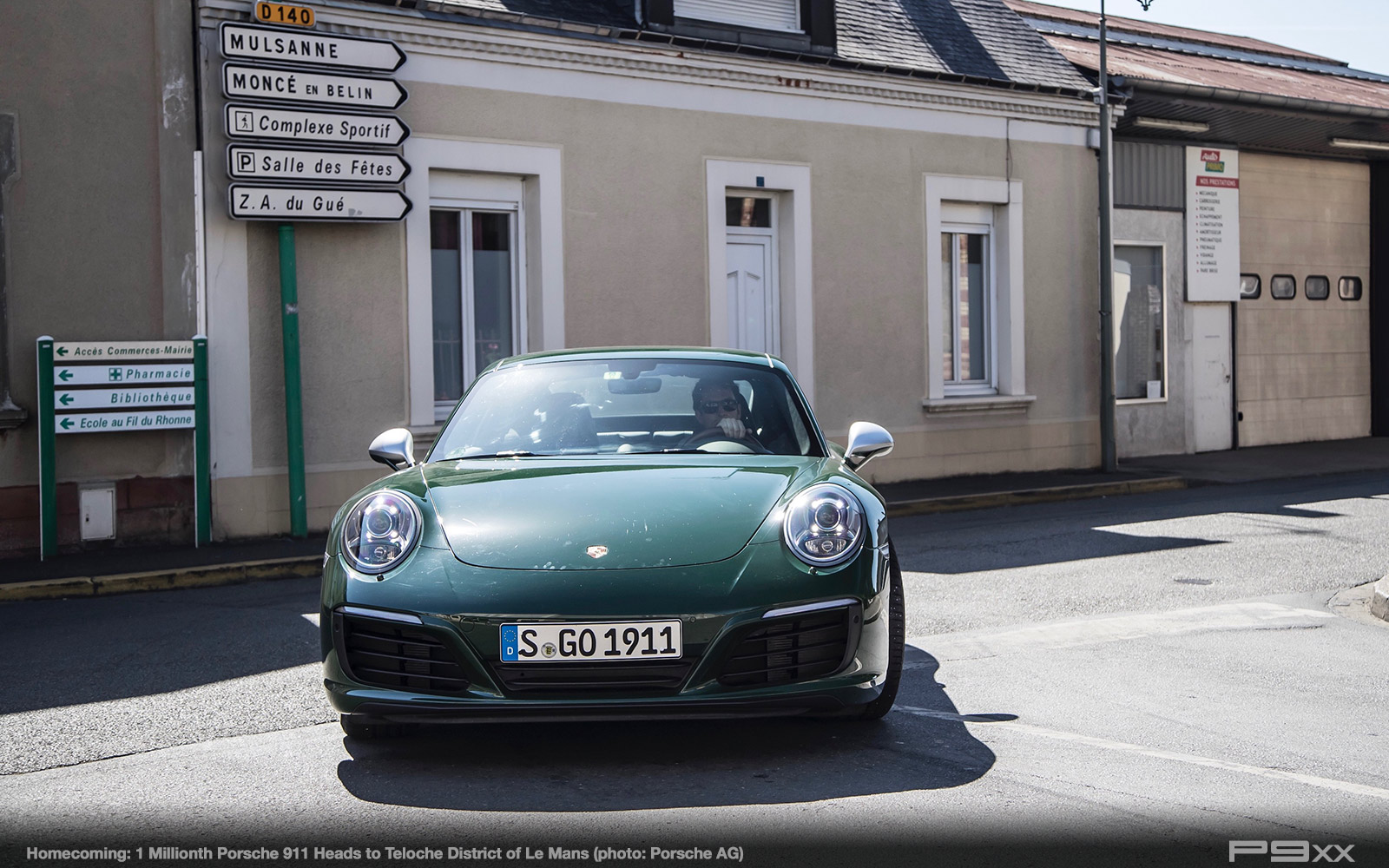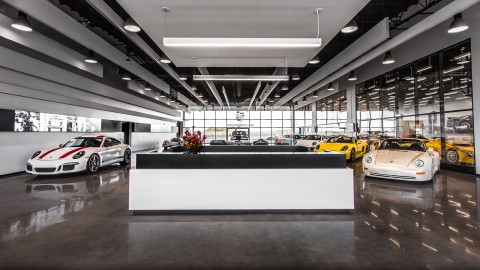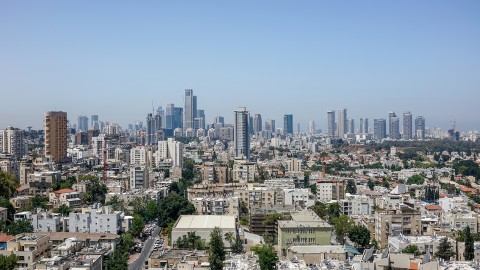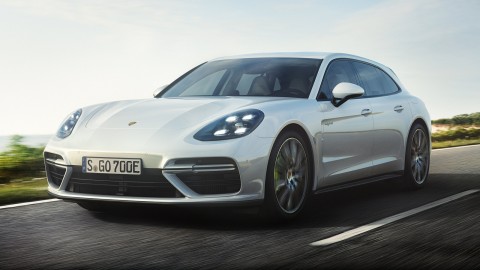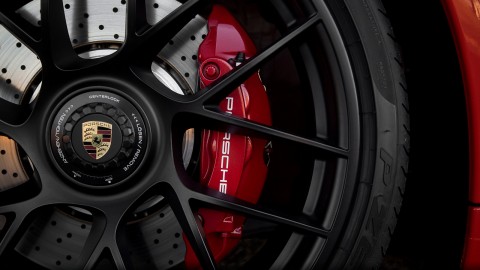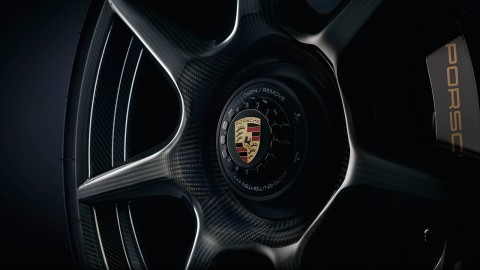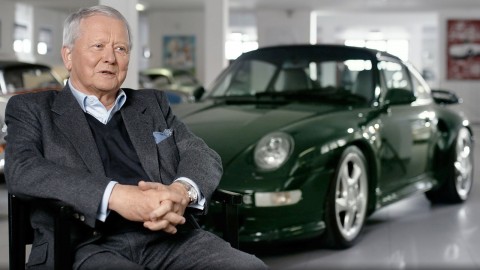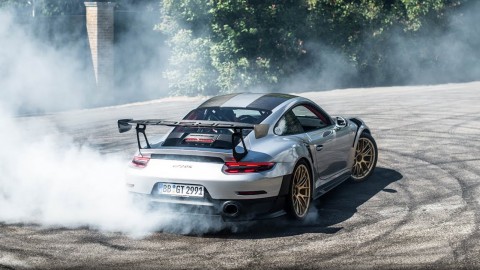Embracing the chaos of Le Mans on race day, the millionth 911 edges out of the Porsche paddock and onto the teeming access roads. A thousand smartphones and long-lens cameras document its glacial progress as we run the gauntlet of motorhomes, cyclists and the myriad race fans already the worse for wear after the staple liquid lunch. The tribe has been given the keys to this very special car in order to undertake a very special journey. A pilgrimage of sorts, to the spiritual home of Porsche at Le Mans. For, just 6km south of here, following the winding country backroad of the D140, lies Teloché, a tiny village with almost as much significance to Porsche’s sporting history as Le Mans itself.
SEE THE FULL P9xx 24 HOURS OF LE MANS PHOTO GALLERY HERE.
Here, in 1951, Porsche established its works garage, on the narrow, residential Rue de 8 Mai. A functioning local garage year round, for the week of Le Mans it became Zuffenhausen’s official home-from-home, its modest footprint tasked with accommodating the full house of cars, drivers, mechanics and engineers. Leaving the congested confines of the circuit’s periphery today, it’s remarkable how quickly you find yourself in peaceful, picture perfect countryside, with narrow single track roads flanked by acres of lush arable farmland.
SEE THE FULL P9xx ONE MILLIONTH PORSCHE 911 HERE.
The millionth 911 can open up at last, stretching its legs through the cooler, crisper air as we head south-east beneath Mulsanne. In the heatwave that has engulfed the region during the race weekend, the hardwood trim of that bespoke steering wheel is strangely warm in the hand, the airy houndstooth upholstery a better option than the sticky-back certainty of full leather.
The journey is over far too soon, however, for Teloché was chosen for its handy proximity to the circuit, enabling Porsche to drive its race cars straight to its southernmost access gate, avoiding the traffic that choked the roads to pits in the north.
As we coast gently down the Rue de 8 Mai, what strikes you first is just how quiet it is. Shutters closed against the heat of the early afternoon sun, empty streets providing welcome shade. How different it would have been, all those years ago, a melee of mechanics and cars littering the pavements, support trucks mounting the high kerbs and crowds of fascinated onlookers of every generation surrounding the race cars that haphazardly dotted the road. Inside the garage, a frenzy of activity, as final checks and last minute changes were made to cars in various states of disassembly.
Where the drivers celebrated their victories with the team
The villagers would have woken early each morning to the sound of newly tuned racing engines firing into life, flat-twelves revving to an ear-splitting crescendo before the cars turned up the road for free practice, qualifying and ultimately the race itself. Absolutely everything happened here. This compact two-door garage, with its freestanding fuel pumps and simple corrugated roof, was Porsche’s mission control.
Across the road from the garage sat Madame Peschard’s Café des Sports, now a hairdresser’s, but then another critical part of the Porsche campaign. For here, late into the night, mechanics and drivers would return from high speed testing to fuel themselves before a few snatched hours of sleep in rented rooms around the village. And it would be here, far away from the modern demands of media and sponsors, that the drivers would celebrate their victories with the team, sharing simple food and local wine, drunk from their winners’ trophies.
The tradition ran through decades and generations, with crew members lodging with the same families year after year, forming lifelong friendships in the process. It wasn’t until the early 1980s, and the arrival of Group C, that the garage at Teloché was wound down. The all-new 956 was such a technical leap forward that everything was suddenly upscaled, and the little shop that Porsche had made its own became another extraordinary chapter in the history of Le Mans.
Today the garage at Teloché can still be found, working year-round to service the motoring needs of the little village that meant so much to Porsche. And the locals still remember Porsche’s presence fondly, with a certain unmistakable pride. For it was from here, in this humble blockwork building, that the most successful manufacturer to compete at Le Mans embarked upon its journey into sports car racing. A journey that would come to shape the very essence of the marque.
As we head the millionth 911 back up la Rue de 8 Mai, towards the noise and confusion of an unfurling epic at Le Mans 2017, its exhaust note echoes off the flat-fronted houses that line the street. The village gives way to fields again and our speed builds, warm air rushing through the cabin. At this precise moment, we learn later, the no.2 919 Hybrid has just pitted unexpectedly, and is already be hurriedly taken pieces in the high-tech trackside garage. It’s going to be a long, hot night at the Circuit De La Sarthe.

